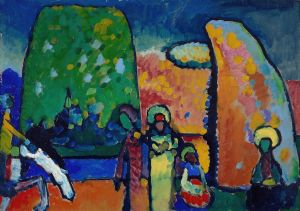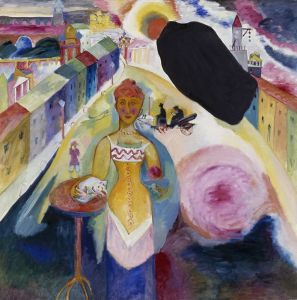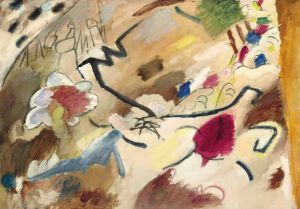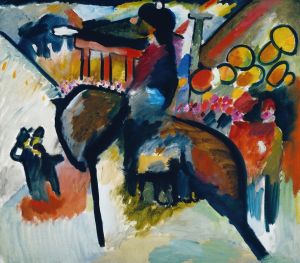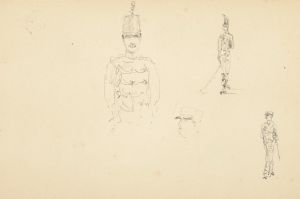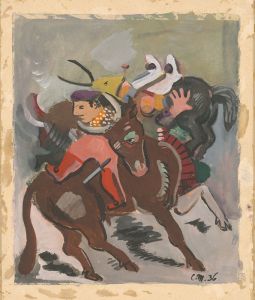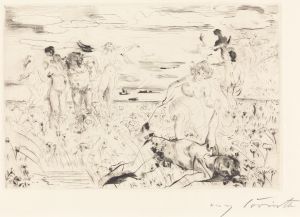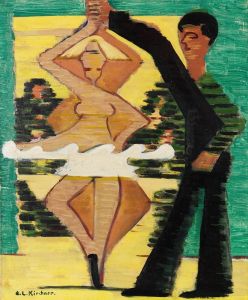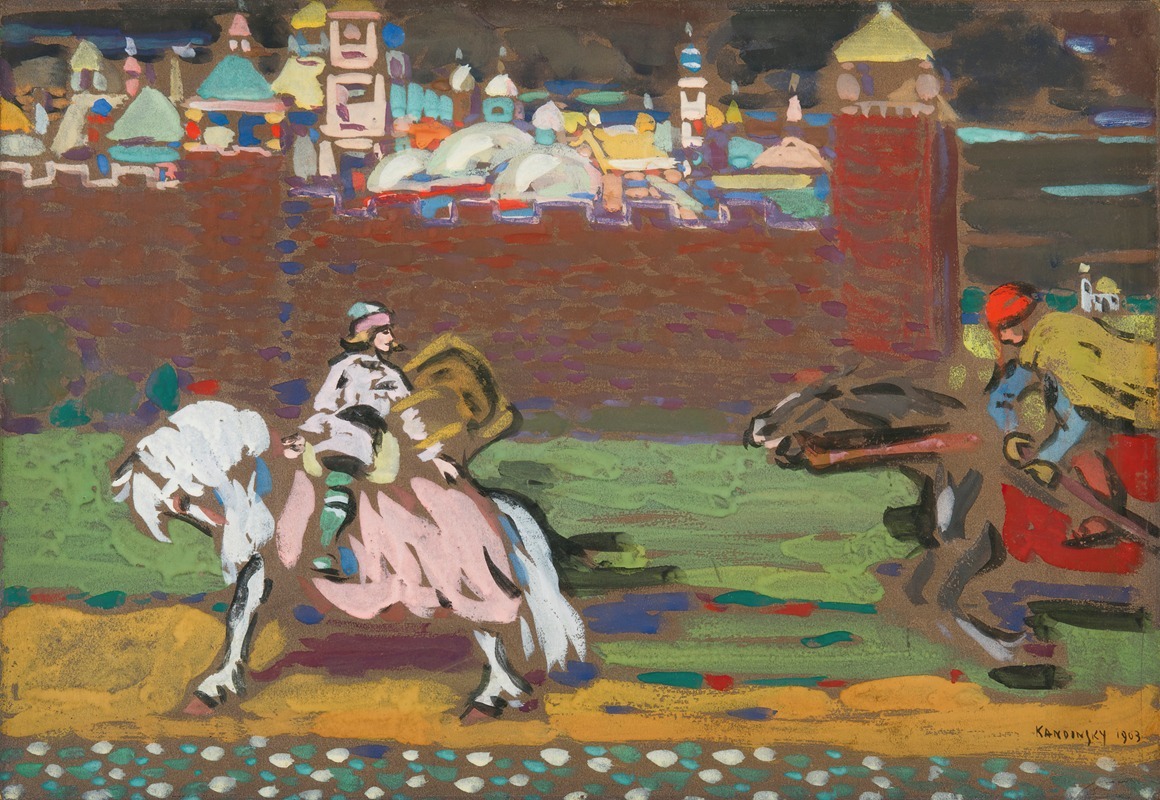
Crusaders
A hand-painted replica of Wassily Kandinsky’s masterpiece Crusaders, meticulously crafted by professional artists to capture the true essence of the original. Each piece is created with museum-quality canvas and rare mineral pigments, carefully painted by experienced artists with delicate brushstrokes and rich, layered colors to perfectly recreate the texture of the original artwork. Unlike machine-printed reproductions, this hand-painted version brings the painting to life, infused with the artist’s emotions and skill in every stroke. Whether for personal collection or home decoration, it instantly elevates the artistic atmosphere of any space.
Wassily Kandinsky, a pioneering figure in abstract art, created the painting "Crusaders" in 1911. This work is part of his exploration into the spiritual and emotional power of art, a theme that permeates much of his oeuvre. Kandinsky, originally from Russia, was deeply influenced by the cultural and artistic movements of his time, including Symbolism and the burgeoning abstract movement. His work often sought to transcend the physical world and evoke a sense of the spiritual through color, form, and composition.
"Crusaders" is a reflection of Kandinsky's interest in the synthesis of music and painting, a concept he referred to as "synesthesia." He believed that colors and shapes could evoke emotions in the same way that music does. This painting is characterized by its vibrant use of color and dynamic composition, which are hallmarks of Kandinsky's style during this period. The work does not depict crusaders in a literal sense but rather uses the idea of a crusade as a metaphor for a spiritual journey or quest.
The painting is notable for its use of bold, contrasting colors and abstract forms. Kandinsky employed a range of geometric shapes and lines to create a sense of movement and energy. This approach was part of his broader effort to break away from traditional representational art and explore the possibilities of abstraction. By doing so, Kandinsky aimed to convey deeper emotional and spiritual truths.
Kandinsky's work during this period was heavily influenced by his theoretical writings, particularly his book "Concerning the Spiritual in Art," published in 1911. In this text, he articulated his belief in the transformative power of art and its ability to communicate profound spiritual experiences. "Crusaders" can be seen as a visual representation of these ideas, with its emphasis on abstraction and the emotive potential of color and form.
The painting is also reflective of the broader cultural and historical context of the early 20th century, a time of significant upheaval and change. Artists like Kandinsky were responding to the rapid industrialization and technological advancements of the era, as well as the shifting philosophical and spiritual paradigms. In this sense, "Crusaders" can be viewed as both a personal expression of Kandinsky's artistic vision and a commentary on the broader societal transformations of his time.
Today, "Crusaders" is recognized as an important work in Kandinsky's oeuvre and a significant contribution to the development of abstract art. It exemplifies his innovative approach to painting and his commitment to exploring the spiritual dimensions of art. The painting continues to be studied and admired for its bold use of color, dynamic composition, and its role in the evolution of modern art.







